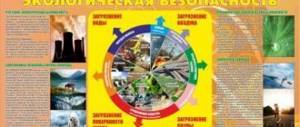Class hour on life safety “Safety at home and on the street” for elementary school children
CLASS HOUR “SAFETY AT HOME AND OUTDOORS”
Goals and objectives: to introduce children to the basics of safety at home and on the street, to bring them to the understanding that safety depends on themselves, to prepare children to get out of unforeseen situations, to develop attention, memory, intelligence. Equipment: pictures and slides depicting safety rules, a crossword puzzle, pictures with puzzles, pictures with dangerous objects.
PROGRESS OF THE CLASS.
Task 1. -Solve the crossword puzzle. 1. I am needle's relatives, but I have no ears. (Pin) 2. Look at me - I’m all full of holes. But I deftly rub carrots for you. (grater) 3. They hit Yarmulka on the back of the head, He doesn’t cry, He just hides his nose. (Nail) 4. Who is ready to cross their two swords over a piece of paper? (Scissors) 5. Four small fires Call us to dine: “It’s time” (Stove) 6. On the table in a cap Yes, in a glass bottle A friend has settled - A cheerful light. (Lamp) 7. What is dangerous about me If there is no soup at the bottom? Only if the soup is hot, hide me from the children. (Pan) 8. Don’t touch it again! Not a toy - sharp... (Knife) 9. I am the most spirited worker, I stab as hard as I can. (Hammer) 10. I am pot-bellied and puffing, Rotozeev does not tolerate. If I want, I’ll pour boiling water over you. (Samovar) 11. At night, if I want, I’ll click it once and turn it on for the day. (Switch) 12. Two legs conspired to make arcs and circles. Keep two legs in a pencil case, not on an armchair, on the sofa. (Compass)
— The topic of our lesson will appear in the highlighted column. Task 2. - Solve riddles about kitchen items that can be dangerous.
I have a sharp, iron blade. Handle with care, because you can cut yourself with it. (Knife.) Outside I am steel, Inside I am water, I am standing on the stove I will give everyone tea. (Kettle.) This is a cramped, cramped house, A hundred sisters huddle in it. And any of the sisters can flare up like a fire. (Matches) Four blue suns In grandma's kitchen, Four blue suns Burnt and went out. The cabbage soup is ripe, the pancakes are sizzling, the sun is not needed until tomorrow. (Gas stove.) Task 3. -Look at the picture and find violations of the rules for safe handling of appliances.
Task 4. -Name five safety rules in everyday life that begin with “NOT”.
Task 5. -Solve the puzzles and explain what danger these objects pose. BACK" + 'GLASSES (MATCHES) DUCK" + SOUTH (Iron) ROSE' + 'BRANCH (ROSETTE) WHALE' + 5″ + CURRENT (BOILING WATER) 'MIG + 'WOLF + A (NEEDLE) L=N FALSE' (Knife ) 'ONION + JUICE' + MUSTACHE' (Vinegar) Task 6. -Name the rules of behavior on the street starting with NOT
-Here are a few more rules. • DO NOT linger on the street on your way home from school. • DO NOT play outside when it is dark. • DO NOT let a stranger into your home. • DO NOT go anywhere with a stranger. • DO NOT get into a car with a stranger. • DO NOT meet people on the street. -And if suddenly an unpleasant situation happens, you need not to get lost and be able to quickly find a way out. Remember some rules. -Don't be too self-confident, don't act provocatively. -Try to suppress the enemy psychologically. -Speak to him boldly, don’t get confused, don’t let yourself be intimidated. -You can apply psychological pressure. Let the criminal believe that you are waiting for your dad or an adult relative, looking for a dog. You need to show that you are not afraid and say in a loud voice: “Rex! Leopard! To me!" Or run up to any house (as if it were your house) and shout under the windows: “Dad!” -How to get outside help? -First of all, you need to attract attention. -What is the best way to shout to get attention? (Fire!) -What can you do while running past a car? (Hit it to make the alarm sound.) -You are running past a group of people, what are your actions? (It’s better to crash into this group.) -What if you run past a shop window? (Hit the glass to make the alarm sound.) -How else can you attract attention to yourself? Task 7. -Decipher the warning text: coast + 'height(s) + no' + sign + 'comet'" + "'street (Beware of the stranger.) Task 8. -Listen to the quatrain: Gleb’s mom is at work. Suddenly his aunt approaches him: “Here’s some candy, dear, Let’s go with you to the zoo!” -Assess this situation. What would you do? Listen to the continuation. The boy didn’t go with his aunt: That’s very good! There is no need to take sweets and chocolate from strangers! The teacher will take us to the zoo, to the cinema, or on a hike. There is no way to forget, who are enemies and who are friends. Task 9. -Game “Finish the poem.” Every literate child must know firmly from the cradle: If you are invited to go swimming, To appear in TV, They promise to give you candy, Answer firmly... (“HET!”) They will offer you a monkey, Or even a bank of money, Or even a ticket to the circus Answer firmly... (" NO!”) They will invite you to fly to the Moon, Ride an elephant... There is a simple answer to everything, You must answer... (“HET!”) -Let’s talk about what to do if they are trying to lure you somewhere. -On the street, a stranger (man, woman, peer) approaches you and offers to watch an interesting film together, go for a ride in a car, go to a cafe, buy something cheap, or look at kittens. -Remember! A normal and decent stranger will never invite you without your parents: not to the sports section, not to the ballet school, not to the museum, not to the zoo, not to play on the computer at work! - Of course, the most reliable thing is not to enter into conversations with a stranger at all, it’s better to step aside. Very often they try to catch children with a cunning hook: “Yeah, so you’re afraid, scared, right?” You must remember once and for all that courage and stupidity are two different things. -Never allow a stranger to touch you. Know how to say “no” to anyone who makes you suspicious, hurts or harms you. You can interrupt the unwanted actions of an outsider by running away from him or loudly calling people for help. Task 10. -You saw a package on the street, or a beautiful toy, or a cell phone, what would you do? Anton was walking in the yard and he saw the suitcase. But Katya said sternly: “Don’t touch the suitcase, Anton, it’s dangerous to open it! This is clear even to a cat: By opening it, you can cause a terrible explosion!” Task 11. - Listen to the proverbs and explain their meaning. “Trouble comes to those who seek it” “Not every find is a treasure” “Not every person you meet is a dear friend” “Beware of troubles while they are not there” - Remember all the rules of behavior that we remembered today.
We recommend watching:
Test with answers on life safety for 4th grade students Test on life safety, 3rd grade with answers Extracurricular activity for 4th grade on life safety. Scenario Extracurricular lesson on life safety for elementary school on the topic: Summer
Similar articles:
Extracurricular lesson on Safety Basics for 3rd grade students
Reminders on traffic rules and life safety for elementary school
Role-playing game for younger schoolchildren. Appliances
Extracurricular lesson on fire safety in elementary school
Competitive program on fire safety, 2nd grade
Possible ways to improve the situation regarding teaching safe behavior
All of the above does not mean that the work of safety training should be completely restructured. Many of its components have proven their importance and effectiveness.
Naturally, safety instructions for children are necessary, especially when conducting laboratory work, working on a computer or in workshops, as well as when traveling or excursions. Conscientious duty of teachers almost guarantees that students follow the rules of safe behavior at school. Conversations with parents, medical monitoring and meetings with law enforcement officers are necessary and useful. However, changing some emphasis in educational work can make safety training more effective.
We can offer:
- when studying the rules of safe behavior in public places, indicate that following them means protecting others, weaker ones, that is, showing strength and courage;
- refuse to position safety as a goal, since it is not close to children, but declare it a means (not to upset parents, not to harm friends, to preserve strength, health and life for great things);
- encourage the development of children's sports and outdoor games (traditional “catch-up” and “Cossack robbers” will relieve physical inactivity and develop team spirit, and at the same time help to “release” excess energy);
- introduce more activities with elements of adventure into the practice of educational work (hiking, “Zarnitsa”);
- the pedagogical community to put pressure on the media in order to ensure the correct placement of semantic accents in the presentation of news.
Perhaps these simple changes will help raise our children to be strong, brave, proactive, and channel their love of adventure and desire for self-affirmation into a creative direction. Then they will truly be safe themselves and will not become a threat to others.
Rules of behavior at school - video
Class hour on the topic “Student safety in the school building”
Methodological development of a class hour for students in grades 5-6
"Student Safety in the School Building"
Form:
conversation with game elements.
Goals:
— educational:
1) ensure knowledge of the basic rules of conduct on school grounds;
2) conduct a conversation on injury prevention in the school building;
— developing: to develop behavioral skills on school grounds;
— educational: to form in students responsibility for their own safety and the safety of others.
Equipment:
multimedia projector, board, paper, pens.
Progress of the event:
Teacher:
Guys, you go to school every day. You gain knowledge in various lessons, visit the canteen, play sports in physical education classes, participate in various extracurricular activities, and relax during breaks. Have you ever thought that school could be a dangerous place for you? This can happen if you don't follow safety rules. To prevent this from happening, you must know exactly how to behave while in the school building. Our event is dedicated to your safety in the school building.
First of all, let's find out what are the main causes of injuries in school
.
1) violation of safety rules and instructions, unwillingness to comply with safety requirements;
2) unintentional injury to peers during and outside of play;
Often, a peer can injure a friend without even noticing him. For example, bumping into others while running.
3) intentional injury.
This happens during a deliberate desire to inflict pain and show one’s physical superiority. For example, injuries received by teenagers during fights.
Our school has “Internal Rules for Students.” If you know and follow all these rules, then no danger within the walls of the school can threaten you. Let's get acquainted with these Rules.
1. General responsibilities of students
Teacher:
So first of all, let's remember the general responsibilities of students. Try to offer your options.
(Students offer their own answer options (for example, go to school, study, don’t play truant, wear a school uniform, etc.)
Okay, let's summarize all the options you suggested.
General Student Responsibilities
Students are required to:
1) attend the educational institution at the designated time and not miss classes without a good reason;
2) stay in the educational institution during school hours. It is possible to leave the school premises during school hours only with the permission of the class teacher or the administrator on duty;
3) study conscientiously, master the curriculum, complete homework in a timely and quality manner;
4) greet school employees and visitors, show respect to elders, and take care of younger ones. Students give way to teachers and adults, older students give way to younger ones, boys give way to girls;
5) take care of the school’s property, provide all possible assistance in its repair, treat both their own and other people’s property with care;
6) take care of your appearance and adhere to business casual attire.
Now think about what you are prohibited from doing on school grounds. Let's divide into 2 teams, and within 5 minutes each team must write down as many options as possible on a piece of paper.
(Then the teams’ answers will be checked, each team in turn offers its own option).
Great! Let's summarize the options you suggested again.
Students are prohibited from:
1) bring weapons, explosives, chemicals, flammable substances, tobacco products, alcoholic beverages, drugs, toxic substances and poisons to the school and its territory;
2) smoke in the building, on school grounds and in the school yard;
3) use profanity;
4) come to school in dirty, wrinkled clothes, indecently short or revealing clothes;
5) walk around school without the need for outerwear and hats.
6) gamble, conduct operations of a speculative nature. Otherwise, the administration, class teachers, and teachers on duty may confiscate the property before the student’s parents (legal representatives) arrive.
Behavior during recess
Teacher:
Uncontrolled behavior of students during recess poses a great danger. It is during breaks, according to statistics, that students most often suffer various injuries. Please suggest how you should behave during a break.
(Students offer their answers.)
Teacher:
During recess, students can move freely around the school, except for those places where they are prohibited from being for safety reasons (attic, basement, kitchen, physical and chemical laboratories). You cannot push each other, throw objects, use physical force, or leave school without the permission of the class teacher or administrator on duty, open windows without permission, sit on window sills, run up stairs, near window openings and in other places not suitable for games. The class on duty helps the teacher on duty to enforce discipline during breaks, so if the student on duty makes a fair comment to you, you should listen to him.
Behavior in the dining room
Teacher:
Where do we rush when we are hungry? Of course, to the school cafeteria. A large number of students gather in this place during breaks, so the cafeteria has its own rules for safe behavior.
Listen to the dialogue and draw a conclusion about the first rule.
Teacher: Children, wash your hands before going to the cafeteria!
1st student: Maybe I should wash my hands after every lesson? My hands are already clean, I washed them this morning.
2nd student: I wonder how many germs are on the door handles at school... and on the desks... Well, what's the difference? You can eat a thousand in a day and you won’t even notice – they’re tasteless!
(Children draw their own conclusions)
Teacher:
So, of course you are right. First of all, before visiting the cafeteria, you need to wash your hands. At school, you need to wash your hands as often as possible - before and after visiting the cafeteria, as well as after visiting the toilet and gym.
What other rules should you follow when visiting the canteen?
1) enter the dining room without outer clothing;
2) exercise attention and caution when receiving and consuming hot and liquid foods;
3) clean up cutlery and dishes after eating.
Behavior during physical education lessons
Teacher:
The most active lesson in school is physical education lesson. Students may unintentionally injure a peer while performing sports or playing games. Therefore, when coming to a physical education lesson, you must remember the following safety rules:
1) exercise in appropriate uniform and shoes;
2) before the lesson, you must take off and remove from your pockets all items that may pose a danger during physical education - bracelets, rings, watches, etc.
3) strictly follow the rules for conducting sports and outdoor games;
4) avoid collisions with opponents, do not allow rude techniques. Moving backwards, look over your shoulder.
5) exclude a sharp change in the direction of your movement;
6) be attentive and focused when performing exercises;
7) at the end of the lesson, you need to leave the place of sports activities in an organized and calm manner and go to the locker room.
Teacher:
Now, let's solve a small crossword puzzle related to the theme of our event.
| 1 U | ||||||||||||||
| H | ||||||||||||||
| 2 P | AND | |||||||||||||
| 3 P | ABOUT | R | T | F | E | L | b | |||||||
| D | E | |||||||||||||
| ABOUT | L | 4 TO | ||||||||||||
| TO | b | U | ||||||||||||
| 5 ABOUT | ABOUT | 6K | L | |||||||||||
| G | N | ABOUT | A | |||||||||||
| 7 AND | Z | IN | AND | N | E | N | AND | I | 8 Z | IN | ABOUT | N | ABOUT | TO |
| E | AND | F | ||||||||||||
| T | TO | 9 P | L | |||||||||||
| U | 10 B | E | G | 11 M | AND | TO | R | ABOUT | B | Y | ||||
| Sh | R | TO | ||||||||||||
| AND | 12 F | AND | Z | TO | U | L | b | T | U | R | A | |||
| T | L | |||||||||||||
| 13 T | R | E | IN | ABOUT | G | A | ||||||||
| L | ||||||||||||||
| b |
Horizontally:
3. Where the student puts his school supplies. 7. They are brought by the one who is to blame. 8. He calls the students to class. 10. Type of movement prohibited in school corridors. 11. There are a lot of them on door handles and desks. 12. The only lesson where you don’t have to sit at a desk. 13. Educational…
Vertically:
1. Who should you listen to in class? 2. You can put flowers on it, but you can’t sit on it. 4. You cannot use it to prove that you are right. 5. How can you put out a fire? 6. A sharp way to resolve contradictions. 9. Hooligans love to ride on them.
Behavior during extracurricular activities
Teacher:
Very often we attend mass events that take place outside the school building, but at the same time they can also threaten us with danger if we do not follow certain rules.
So, what you need to know when going to a public event with your school:
1) before conducting events, students are required to undergo safety training;
2) you should strictly follow all the instructions of the leader when holding mass events, avoid any actions that may be dangerous to your own life and to others;
3) students must maintain discipline, follow the established route, remain in the location of the group, if this is determined by the leader;
4) strictly observe the rules of personal hygiene, promptly inform the group leader about deterioration in health or injury;
5) students must respect local traditions, take care of nature, historical and cultural monuments, personal and group property;
6) it is prohibited to use open fire (torches, candles, fireworks, firecrackers, bonfires, etc.), or to create lighting effects using chemical, pyrotechnic and other means that can cause a fire.
Teacher:
Summing up our conversation, what should we remember?
(Students give their answers)
That's right, we must remember and follow the safety rules. But what will you do if, for some reason, you are injured?
(Students give their answers)
If you are injured at school, you need to go to the first aid station. Ask someone to accompany you if you feel unwell.
Remember, by following the rules of safe behavior at school, you will protect not only yourself, but also your peers!
Literature used in preparation for extracurricular activities:
1) Internal regulations for students of the Municipal Educational Institution “Secondary School No. 39”.
Link to the page of the website of Municipal Educational Institution “Osh No. 39”, on which these Rules are located (section “Regulations”) - https://sar-school39.ucoz.ru/index/dokumenty/0-49
2) The crossword puzzle is based on the “Safety at School” crossword puzzle from the Spas-Extreme website (section “Autumn Adventures”) - https://www.spas-extreme.ru/themes/fall
3) Abazina L.V. Student safety in the school building. — https://www.uchportal.ru/publ/16-1-0-4313



